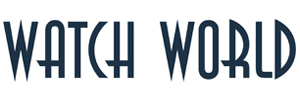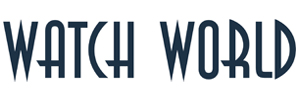When I Met A Moonwalker…
OMEGA brought together the men behind the lunar landing mission on the 40th anniversary of the historical event and Mitrajit Bhattacharya met up with some of them
Meeting a member of one of the world’s most elite clubs – only 12 men have ever walked on the Moon – is a thrilling moment in one’s life. More so, when you get to speak to the astronaut who followed Neil Armstrong on the Moon and stepped on its surface: Buzz Aldrin.
Sharing his experiences on a chilly day at Basel, Buzz says he wished he could “see more (of earth). When I was in the orbit around the earth I was quite close (to the earth), I could still see. But now I am moving away. It is curious to just watch your home go smaller.”
It was six weeks before take-off that Aldrin was told by NASA that he would follow his commander, Neil Armstrong, to the moon’s surface. “In the very early planning of Apollo, we knew that there would be two people landing,” said Aldrin at the Omegasponsored event, celebrating the 40th year of landing on moon. Incidentally, the Apollo 11 astronauts wore Omega Speedmaster, which came to be known as the Moonwatch, for it became the only wristwatch approved by NASA (National Aeronautics and Space Administration) for all its manned space flights.

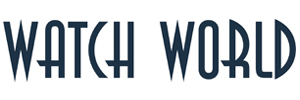
On July 20, 1969, the human race accomplished its single greatest technological achievement of all times when a man first set foot on another celestial body. Six hours after landing, at 4.17 pm Eastern Daylight Time (with less than 30 seconds of fuel remaining), Neil Armstrong took a ‘small step’ into our greater future when he stepped off the Lunar Module named Eagle on to the surface of the Moon, from which he could look up and see Earth as no one had done before him.

He was shortly joined by Buzz Aldrin. The two astronauts spent 21 hours on the lunar surface. After their historic walks on the Moon, they successfully docked with the Command Module Columbia in which Michael Collins was patiently orbiting the cold, but no longer lifeless, Moon.
The astronauts also returned to Earth the first samples from another planetary body. Having achieved its primary mission of manned lunar landing and returning the mission safely to Earth, Apollo 11 paved the way for Apollo lunar landing missions to follow. All through the Apollo missions, the astronauts wore Omega Speedmaster on their wrists. How the Speedmaster came to be selected as the ‘Moonwatch’ makes for interesting reading.
It all began in the early 1960s when two NASA officials anonymously visited several Houston jewellery stores and bought a series of chronographs of different brands, charged with the task of finding the best watch available for their astronauts to wear in space.
The solo-flight Mercury space programme was almost completed (in fact, Wally Schirra had worn his own Speedmaster on his Mercury flight on October 3, 1962) and NASA was preparing for the Gemini (twoman) and Apollo (three-man) missions. There were plans for the astronauts on these missions to move about in space outside the spaceship wearing a wristwatch which could withstand the difficult conditions of space.
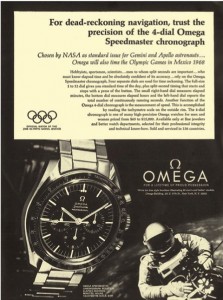
Like, every time an astronaut suspended in the vacuum of space turned his wrist, the watch would suddenly come out of the shade and be exposed to the unfiltered rays of the sun and temperature increases of more than 100°C. Temperatures on the lunar surface fluctuate between -160°C and +120°C. A series of strenuous tests was devised to determine which watch was best suited to the extreme challenges of space.
NASA ordered two Speedmasters and two each of five other chronographs for “testing and evaluation purposes” on September 29, 1964, at a price of $82.50 and stipulated that it be delivered within a month. Recalls Jim Ragan, the aerospace engineer responsible for the chronograph tests and an invitee to the Omega event, “We put out a request to seven different watch manufacturing companies for a quote or a request for proposal and I did not say what it was for. They knew the call was from NASA because it came at a time when we were on Manned Spacecraft Centre, but had no idea what was it for.”
According to Ragan, three brands were short listed. “I bought four each of them. Totally 12 of them,” he told btw.
When NASA received the watches, they were subjected to a series of stringent tests and preselection processes, called the ‘Qualification Test Procedures’. Only three watches out of six chronographs successfully survived this arduous pre-selection phase. The finalists were then subjected to 11 different tests – the most rigorous trials endured in the history of horology.
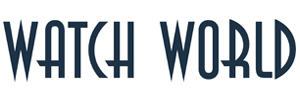

On March 1, 1965, the results were out. Three brands’ chronographs were still in the running. Of these, one brand’s entry had stumbled on two separate occasions in the relative humidity test. In the course of the heat-resistance test it finally came to rest for good. The large seconds hand warped and was binding against the other hands.
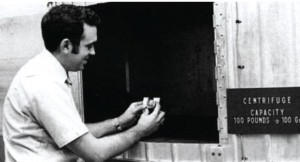
“In the end, the only one that made it through all the testing without any problems at all was the Omega; the rest of them at some point in time failed the test,” remembers Ragan. “The crew, like me, was interested in how it performs. I do not think the crew had a preference to begin with but I wanted them to tell me which one they liked the best and Omega is the one that came through.”
To commemorate the momentous event, the brand has launched two Omega Speedmaster Professional Moonwatch Apollo 11 ‘40th Anniversary’ Limited Edition watches: one in stainless steel and sterling silver (7,969 pieces); the other in platinum and 18 Ct yellow gold (69 pieces).
For those few of us who witnessed the Omega event which honoured four Moonwalkers – Buzz Aldrin, Charles Duke, Harrison Schmitt and Eugene Cernan – and another, Thomas Stafford, who has orbited the Moon, it was a very memorable experience. The occasion was made unforgettable as it included Gerald Griffin, one of the lead flight directors for the Apollo missions and Jim Ragan, the aerospace engineer who was responsible for the chronograph tests.
But for me, more was coming as I bade goodbye to Buzz, who is very well informed about India, when he said: “Give my regards to Mr Tata. Tell him I will ride his Jaguar one day.”
Source: btw magazine, May 2009
